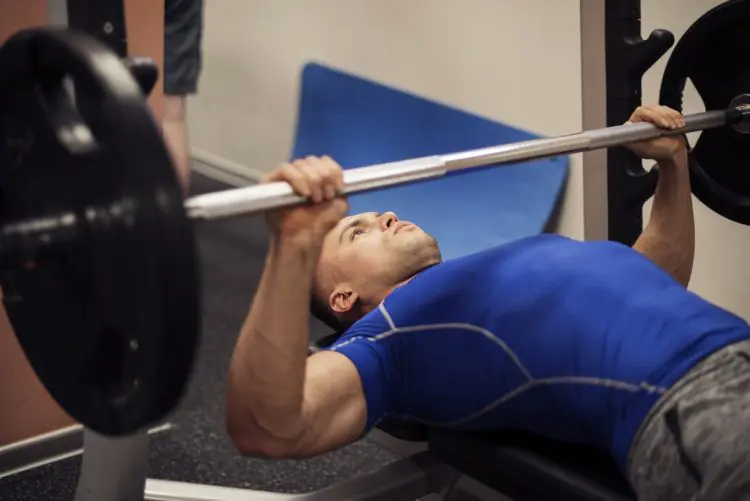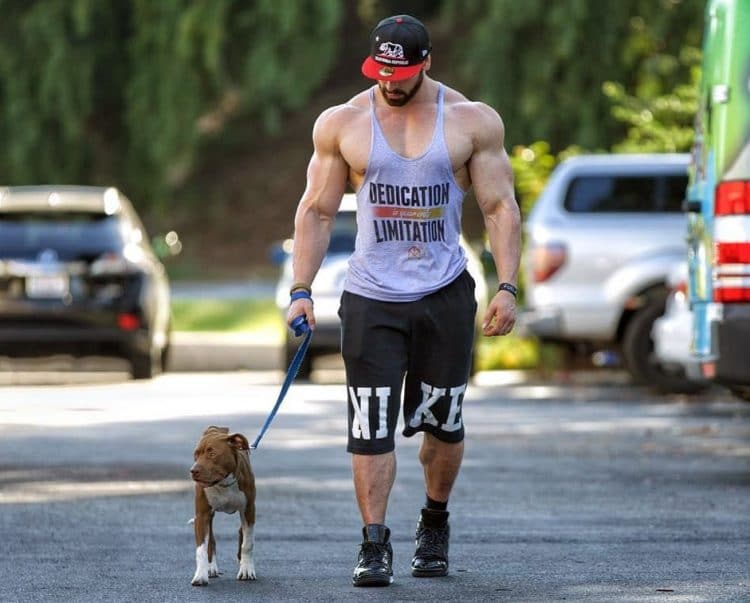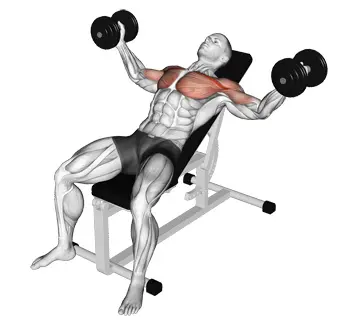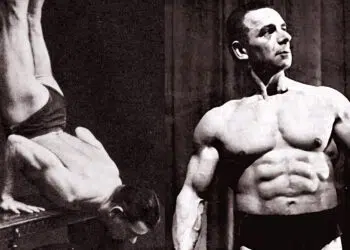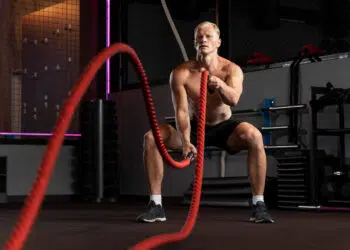After weeks or months of bulking, you’ve hopefully gained an appreciable amount of muscle. You’re looking swole, bro! But, as well as adding inches to your chest, arms, and thighs, your waist has probably thickened up a bit (or a lot), too. Along with all that muscle, you’ve gained fat. This is a perfectly normal part of the bulking process.
After a bulk, most lifters want to get lean and embark on a cutting diet. This generally involves consuming fewer calories than what your body needs, cutting carbs and fat, and eating clean. You may even try something like intermittent fasting or keto.
However, while you will lose fat by following a cutting diet, there is a very real chance that you’ll lose muscle too. And that’s a shame, given how hard you’ve just worked to get bigger and stronger.
While some muscle loss is almost inevitable, you can minimize it by eating the right amount of protein, losing fat slowly, and adopting a decent workout program. With someone who have over 30 years of training experience, here are the seven cutting workout plans I recommend to get ripped without losing your hard-earned muscle.
In this article, we reveal our latest cutting workout plan for preserving muscle and torching fat.
Cutting Workout Plan
In theory, you can get cut using any standard bodybuilding or strength-building workout. Losing fat is largely a question of proper diet. If you eat less and create a calorie deficit, your body has no choice but to burn fat for fuel. Stick with it long enough, and you should get leaner and, eventually, ripped.
Level Up Your Fitness: Join our 💪 strong community in Fitness Volt Newsletter. Get daily inspiration, expert-backed workouts, nutrition tips, the latest in strength sports, and the support you need to reach your goals. Subscribe for free!
But, if you keep doing the same workouts and exercises over and over, you’re more likely to get bored of your workouts and may even end up stuck in a progress rut.
So, it makes sense to adopt a cutting workout plan that’s different from the program you followed for bulking. If nothing else, this will provide you with the training variation you need to avoid plateaus.
This workout is designed to preserve muscle mass, accelerate fat loss, and help you get ripped. However, you’ll get better results if you combine it with a sensible fat loss diet.
Follow this plan for the next 6-8 weeks:
| Mon | Tue | Wed | Thu | Fri | Sat | Sun |
| Lower Body | Upper Body | HIIT 1 | Rest | Full Body | HIIT 2 | Rest |
| Walk 10,000 steps | Walk 10,000 steps | Walk 10,000 steps | Walk 10,000 steps | Walk 10,000 steps | Walk 10,000 steps | Walk 10,000 steps |
Related: Running Calorie Calculator
And these are the workouts you’ll be doing:
Lower Body Workout
| Exercise | Sets | Reps | Recovery | |
| 1 | Zercher squat | 5 | 5 | 2 minutes |
| 2 | Romanian deadlift | 4 | 8 | 90 seconds |
| 3a* | Hack squat | 3 | 10 | 60 seconds |
| 3b* | Leg curl | |||
| 4 | Walking lunge | 3 | 12 | 60 seconds |
| 5 | Seated calf raise | 3 | 12 | 60 seconds |
| 6 | Standing calf raise | 3 | 12 | 60 seconds |
Finisher: Abs Medley – choose 3-5 different abs exercises and do 10-15 reps of each non-stop for seven minutes straight. Your only rest is the time it takes to transition from one exercise to the next. Choose dissimilar movements to hit your abs from all available angles, e.g.:
Upper Body Workout
| Exercise | Sets | Reps | Recovery | |
| 1 | Barbell bench press | 5 | 5 | 2 minutes |
| 2 | Pull-ups/chin-ups | 4 | 8 | 90 seconds |
| 3 | Incline dumbbell bench press | 4 | 8 | 90 seconds |
| 4 | Pendlay row | 5 | 5 | 2 minutes |
| 5 | Dumbbell clean and press | 3 | 10 | 60 seconds |
| 6a* | Barbell drag curl | 3 | 12 | 60 seconds |
| 6b* | Dumbbell skull crushers |
Finisher: Run one mile as fast as you can. Not much of a runner? You can use a rowing machine instead.
HIIT 1
Using an exercise bike, rower, elliptical, or treadmill, warm-up for 5-10 minutes and then do the following:
- Sprint for 30 seconds
- Slow down and recover for 60 seconds
- Repeat 12 times to total 18 minutes
Finish off with another 5-10 minutes of cardio to cool down.
Full Body Workout
| Exercise | Sets | Reps | |
| 1 | Front squat | 4 | 8-12 |
| 2 | Barbell hip thrust | 4 | 8-12 |
| 3 | Incline bench press | 4 | 8-12 |
| 4 | Yates row | 4 | 8-12 |
| 5 | Arnold press | 4 | 8-12 |
| 6 | Lat pulldown | 4 | 8-12 |
| 7 | Parallel bar dip | 4 | 8-12 |
| 8 | Dumbbell biceps curl | 4 | 8-12 |
| Recovery | |||
| 10-15 seconds between exercises, 1-2 minutes between laps | |||
This workout is to be done as a circuit. Perform each exercise in turn, moving quickly from one exercise to the next. Only rest after completing the final exercise.
Finisher: Abs Medley – choose 3-5 different abs exercises and do 10-15 reps of each non-stop for seven minutes straight. Your only rest is the time it takes to transition from one exercise to the next. Choose dissimilar movements to hit your abs from all available angles, e.g.:
HIIT 2
Using an exercise bike, rower, elliptical, or treadmill, warm-up for 5-10 minutes and then do the following Tabata circuit:
- 20 seconds burpees
- Rest 10 seconds
- 20 seconds fast feet
- Rest 10 seconds
- 20 seconds box jump
- Rest 10 seconds
- 20 seconds jump rope
- Rest 10 seconds
- Repeat eight times to total 16 minutes
Finish off with another 5-10 minutes of cardio to cool down.
Walking
Five workouts per week might sound like enough to get ripped, but if you are sedentary the rest of the time, it probably isn’t. The less active you are, the stricter your diet needs to be, and the longer it’ll take to lose that unwanted fat.
Walking 10,000 steps per day will help speed up fat loss without tiring you out. In fact, it’ll probably help you recover faster.
10,000 steps is about five miles, which may sound like a lot. However, you don’t have to do it all in one go and, spread throughout your day, 10,000 steps should be a very manageable target. Use a fitness tracker or pedometer to make sure you walk at least 10,000 steps every day.
The Problem with Most Cutting Workout Plans
Cutting workout plans are generally designed to increase your calorie expenditure, often with lots of cardio. Unfortunately, while cardio does burn calories and fat, it can also lead to muscle loss.
Your body is amazingly adaptive. It makes changes based on the stresses it’s exposed to. If you do a lot of cardio, you’ll get fitter. But, to make you better at cardio, it’ll try and take the stress off your heart and lungs by shedding muscle weight.
The issue of too much cardio is often made worse by poorly designed strength training workouts.
Level Up Your Fitness: Join our 💪 strong community in Fitness Volt Newsletter. Get daily inspiration, expert-backed workouts, nutrition tips, the latest in strength sports, and the support you need to reach your goals. Subscribe for free!
Traditionally, and quite rightly, bulking workouts are built around heavy compound exercises like squats, deadlifts, bench presses, and bent-over rows. This makes a lot of sense because these are the most challenging exercises, and therefore the best for building muscle mass.
For cutting, a lot of people replace these compound bulking exercises with high-rep isolation exercises. The idea is that these exercises are better for sculpting and shaping and increasing definition.
However, your body works on a “use it or lose it” principle. If you stop lifting heavy, your body will think you no longer need such big, strong muscles. Combined with all that cardio, it’s hardly surprising that this approach leads to significant muscle loss.
Sure, lots of cardio and high-rep leg extensions and lateral raises CAN help you shed fat, but if you lose muscle too, your physique will be far less impressive. What you really want is to be muscular AND lean, and not just skinny.
The following workout is designed to help you lose fat while keeping hold of as much muscle as possible.
Related: 6 Week Cutting Diet for Less Fat and More Gains
Hints and Tips for Even Better Results
Get even more from this cutting workout plan by putting the following hints and tips into action:
1. Don’t starve yourself
Dieting aggressively will lead to faster fat loss, but you’ll lose more muscle too. Aim for a 300-500 calorie deficit to minimize muscle loss. Ideally, you should lose 1-2 pounds per week. If you have a lot of fat to lose, diet for longer rather than cut your calories more. Slow and steady is the way to go.
2. Get plenty of sleep
Sleep and fat loss are inextricably linked. Too little sleep can cause hunger and cravings, slow your metabolism, and rob you of the energy you need to work out. Do your best to get 7-9 hours of sleep per night. Not just at weekends, but from Monday to Friday, too.
3. Strive for strength
Minimize muscle loss by doing your best to maintain your strength. While it’ll be a challenge, try to increase your weights week by week. If that’s not possible, avoid lowering them unless absolutely necessary.
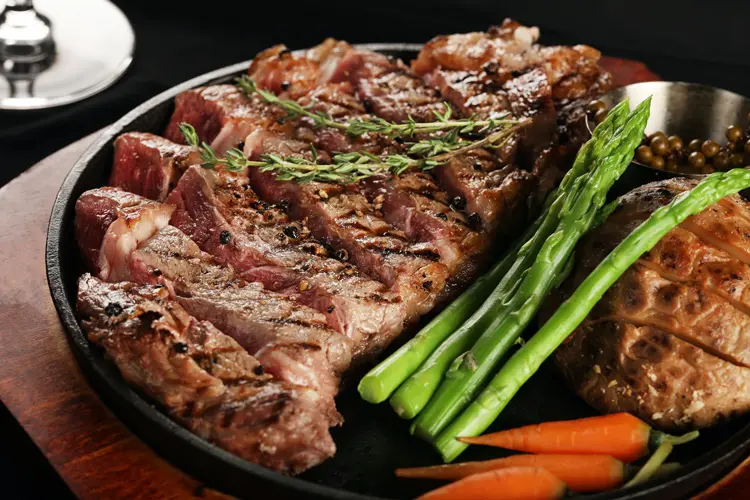
4. Pump up the protein
Minimize muscle breakdown by making sure you build all your meals around high-protein foods and snacking on protein, too. You may also benefit from using a protein powder. Your body needs protein to preserve your muscle mass and repair the damage caused by your workouts. Protein is also satiating and increases your metabolic rate.
5. Supplement wisely
While you don’t have to use supplements during your cut, they can be beneficial. Consider adding these products to your diet:
6. Eat clean
When it comes to losing weight and getting ripped, calories count. Without a calorie deficit, your body has no reason to burn fat. However, as well as eating less, you also need to make sure you provide your body with the nutrients it needs to function properly, and that means vitamins, minerals, and fiber.
You’ll probably get ripped faster if you eat clean. That means filling up on nutritious vegetables, fruit, whole grains, lean proteins, and natural fat. That doesn’t mean you can’t eat the occasional treat (see tip #8), but most of your meals should be healthy.
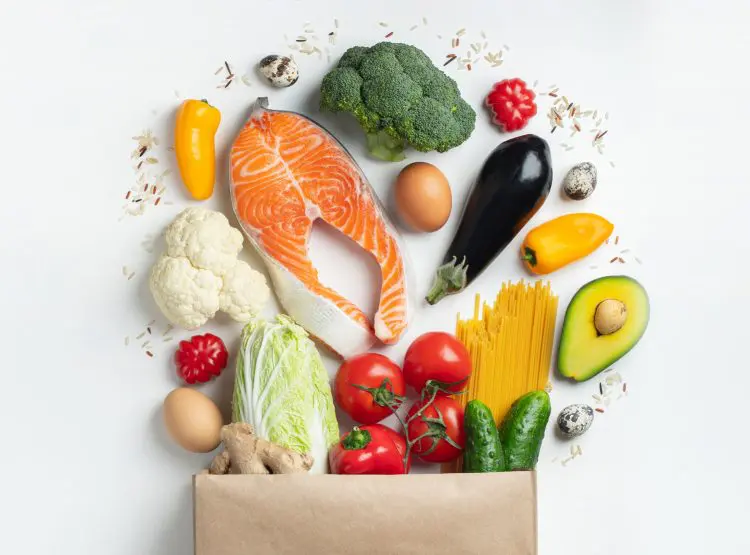
7. Track your progress
Make sure that your workout and diet are producing the results you want by tracking your progress. If you aren’t seeing changes, you may need to increase your calorie deficit. Practical tracking methods include:
- Progress photos
- Girth measurements
- Body weight
- Body fat percentage
- How your clothes fit
8. Treat, don’t binge
The less you cheat on your diet, the sooner you’ll reach your fat loss goal. That said, it’s only natural to want the foods you’re not supposed to eat. Give yourself a break by having the occasional treat meal. This, as the name implies, should be just one meal and not an entire day or weekend of binging. A couple of slices of pizza is an acceptable treat meal. Eating a family pizza on your own is not!
How often should you treat yourself? One meal out of every ten is a reasonable target for most people. So, if you eat three meals a day, you can enjoy a treat roughly twice a week.
However, you must get back on the diet wagon immediately after your treat meal, taking take care not to overdo it and undo your progress. Ideally, consume your treat meal shortly after a workout.
It’s also worth adding that you need to earn those treats. If you are skipping workouts or having unplanned breaks from your cutting diet, added treats will just delay your progress.
FAQs
Can I cut without losing muscle?
With the right approach, it is possible to minimize muscle loss while cutting body fat. However, muscle loss cannot be ruled out completely, especially if you want to lose more than a couple of pounds every week.
Should I bulk or cut first?
It will depend on your goal and current body fat percentage. If you want to build muscle mass or gain strength and your body fat is around 10 to 15 percent, you should bulk first and cut later. On the other hand, if your body fat percentage is 20 percent or above, you should begin with cutting. Following a cutting workout plan first is also the right choice if your goal is to get shredded.
Is it possible to lose fat and gain muscle at the same time?
Yes, following a recomp program can help you lose fat and gain muscle at the same time. For the program to be a hit, you should ensure you are progressively overloading your muscles while eating a calorie-deficit diet.
How long will it take to lose weight?
Your weight loss results depend on the effectiveness of the calorie deficit you are running. Experts recommend a weight loss of 1–3 pounds (0.45–1.36 kg) per week or about 1% of your body weight. [1]
Next Read: How to Lose 20 Pounds in a Month — Explained!
Wrapping Up
Unless you take a boatload of steroids, it’s a terrible idea to use lots of cardio and high-rep isolation exercises to get ripped. You’ll lose fat, but you’ll also end up losing a lot of muscle too.
Retain as much of your muscle mass as possible by using compound exercises and lifting heavy weights. And while you can do cardio, if your diet is on-point, you shouldn’t need much to enhance fat loss. If you feel like the only way you can lose fat is to do hours of stationary cycling, jogging, rowing, etc., you are probably overeating.
Combine this program with a sensible calorie deficit and clean eating to lose fat, preserve muscle, and stay healthy!
References
- NHLBI Obesity Education Initiative Expert Panel on the Identification, Evaluation, and Treatment of Obesity in Adults (US). Clinical Guidelines on the Identification, Evaluation, and Treatment of Overweight and Obesity in Adults: The Evidence Report. Bethesda (MD): National Heart, Lung, and Blood Institute; 1998 Sep. Available from: https://www.ncbi.nlm.nih.gov/books/NBK2003/

